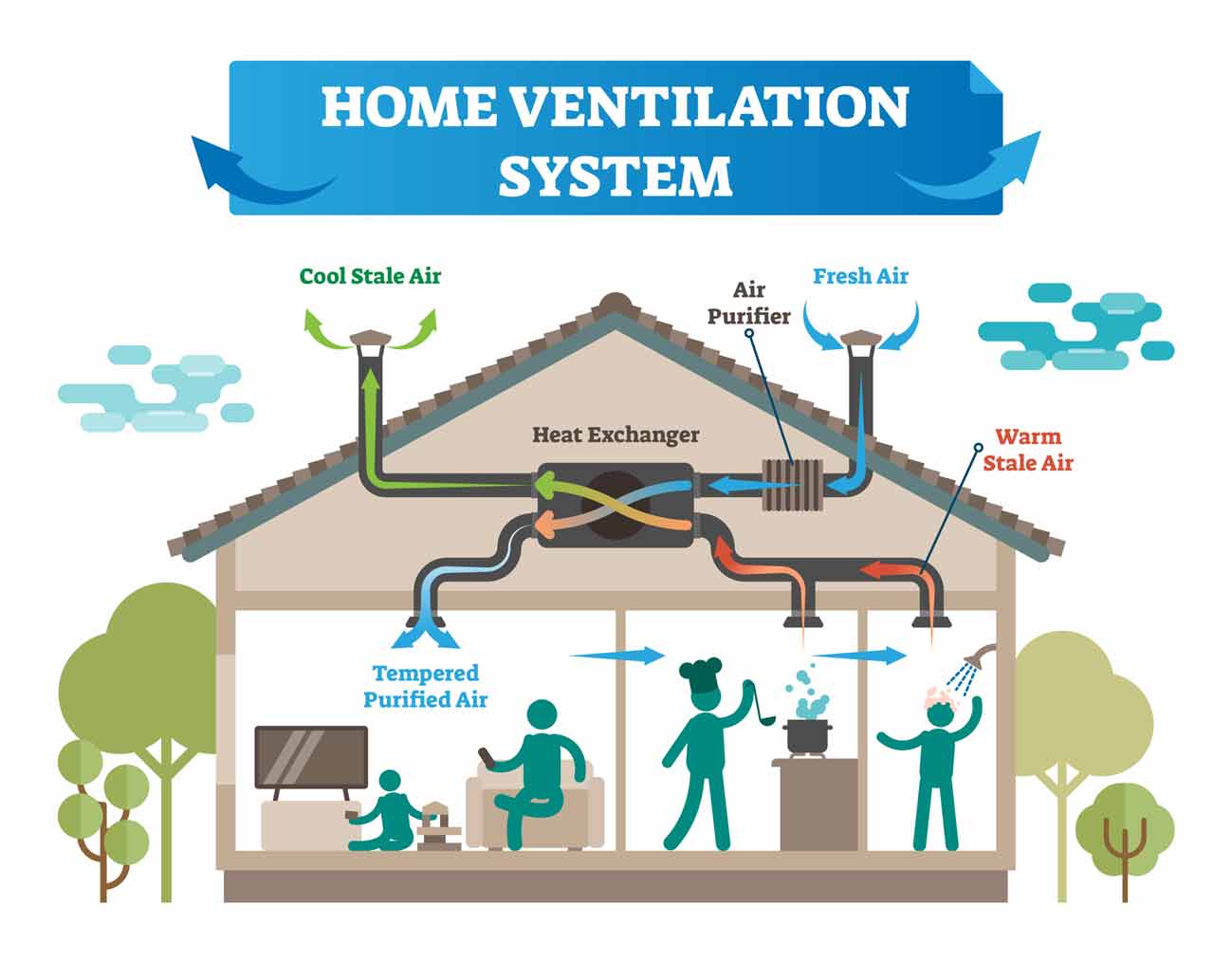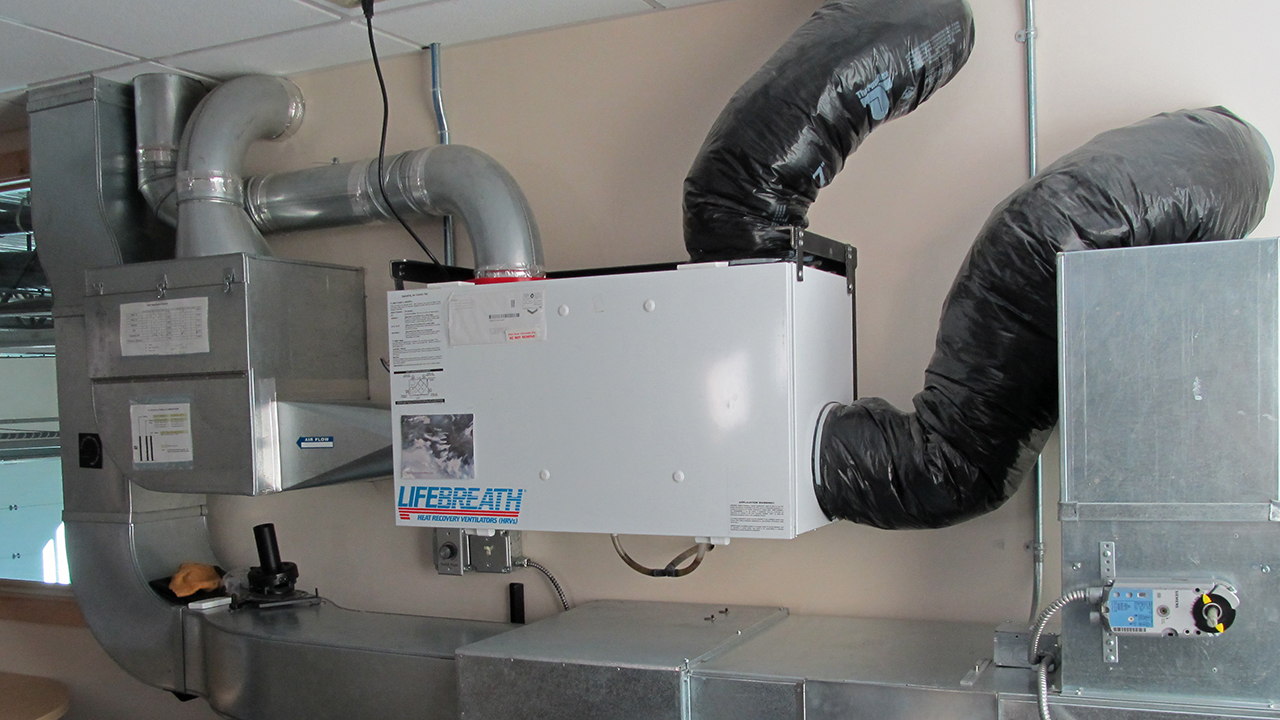HRV Selection Guide: What Features to Consider
Wiki Article
Exploring the Conveniences of Heat Recovery Ventilation for Power Efficiency in Residences
Heat Recovery Ventilation (HRV) systems use homeowners a functional method to improving energy effectiveness. By redeeming heat from outbound air, these systems can substantially reduce heating and cooling expenses. Additionally, they give a constant supply of fresh air, enhancing interior air quality and convenience levels. As homeowners think about lasting choices, comprehending the subtleties of HRV systems becomes significantly crucial. What factors should one review before making such a financial investment?Comprehending Heat Recovery Ventilation Equipments

Just How HRV Boosts Indoor Air High Quality

Energy Financial Savings: The Financial Benefits of HRV
Taking full advantage of power effectiveness, heat recovery ventilation (HRV) systems supply substantial economic advantages for homeowners. By recovering and reusing warm from exhaust air, HRVs substantially minimize cooling and heating costs. This technology can bring about energy financial savings of as much as 30%, depending on environment and use patterns. House owners typically notice minimized utility expenses shortly after installment, making HRVs a monetarily smart investment over time. In addition, lots of regions offer incentives or rebates for energy-efficient upgrades, better enhancing the economic charm. As energy click site rates remain to rise, the cost-effectiveness of HRVs becomes progressively clear. On the whole, the unification of HRV systems not only advertises power performance but also adds to long-lasting financial cost savings for homes.The Ecological Influence of Heat Recovery Ventilation
A significant environmental advantage of heat recovery ventilation (HRV) systems hinges on their ability to minimize general power consumption. By recovering warmth from exhaust air and moving it to inbound fresh air, HRV systems decrease the demand for energy-intensive heating and cooling approaches. This reduction in power need adds to reduce greenhouse gas exhausts, as less nonrenewable fuel source is called for to keep comfortable indoor temperatures. Additionally, HRV systems boost interior air top quality by successfully trading stale air with fresh exterior air, decreasing dependence on mechanical air conditioning systems that can damage the environment. In general, the implementation of HRV systems sustains lasting living methods and straightens with worldwide efforts to fight environment modification by advertising power performance in residential setups.
Choosing the Right HRV System for Your Home
How can property owners guarantee they pick the ideal heat recovery ventilation (HRV) system for their requirements? First, they should assess their home's dimension and design, as these factors affect air flow requirements. Next, examining the system's performance rankings is crucial, as higher scores show better useful source efficiency and power savings. Homeowners read here ought to additionally take into consideration installation and upkeep expenses, comparing various brand names and designs for value. Additionally, it is necessary to assess sound degrees, as some systems operate even more silently than others. Consulting with heating and cooling professionals can offer tailored referrals based on specific home problems. Finally, checking out customer reviews and guarantees can aid in making an educated decision, ensuring that the chosen HRV system effectively boosts indoor air quality and energy efficiency.Often Asked Questions

Just how Commonly Should I Clean or Maintain My HRV System?
The regularity of cleaning or preserving a heat healing ventilation (HRV) system commonly depends on use and environmental aspects. Typically, it is recommended to execute maintenance every 6 months to guarantee peak performance and air top quality.
Can HRV Equipments Assist Lower Humidity Degrees Inside?
HRV systems can efficiently decrease indoor moisture levels by trading stale, humid air with fresh, drier air from outdoors. HRV Heat Recovery Ventilation. This procedure aids preserve a well balanced interior setting, boosting convenience and preventing moisture-related problems
What Is the Life-span of a Normal HRV System?
The life expectancy of a regular heat recovery ventilation (HRV) system differs, usually lasting between 10 to 15 years. Normal upkeep can prolong its effectiveness and functional life, making sure peak efficiency throughout its usage period.Exist Any Type Of Noise Problems With HRV Solutions?
Sound worry about HRV systems can emerge, specifically from fan operation. Many modern units are developed to minimize sound degrees, guaranteeing they run quietly while preserving effectiveness, which attends to potential disruptions in living settings.Can I Set Up an HRV System Myself, or Do I Need a Professional?
The individual contemplated whether to mount the heat recovery ventilation (HRV) system directly or employ a professional. Typically, while do it yourself installment is feasible, proficiency guarantees correct functionality and conformity with neighborhood building codes, enhancing system efficiency.Report this wiki page